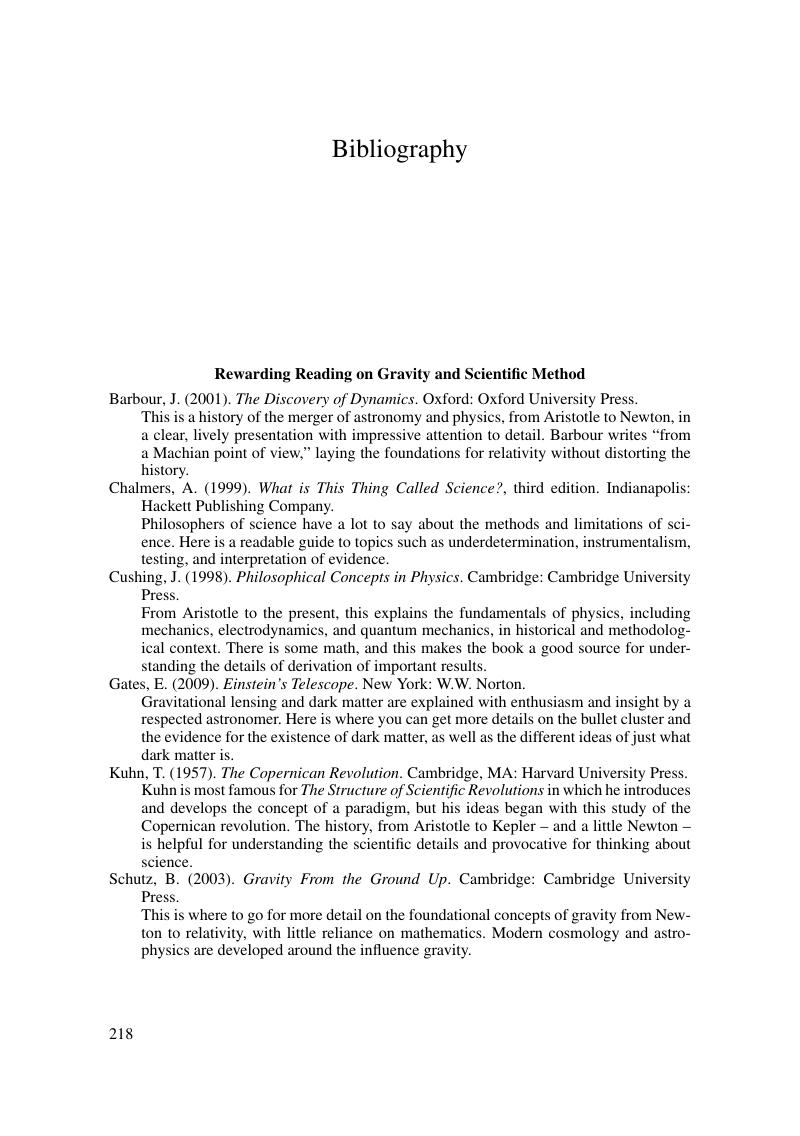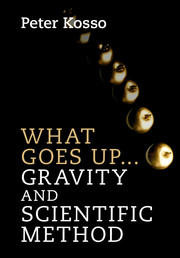Book contents
- What Goes Up…Gravity and Scientific Method
- What Goes Up…Gravity and Scientific Method
- Copyright page
- Contents
- Preface
- 1 Introduction: What to Expect from a Science of Gravity
- 2 Forces and Fields
- 3 Basic Newtonian Theory
- 4 Gravity Before Newton
- 5 Early Modern Astronomy
- 6 Connecting Physics and Astronomy
- 7 Connecting Kinematics and Dynamics
- 8 Testing the Newtonian Theory
- 9 Challenging the Newtonian Theory
- 10 Geometry and Equivalence
- 11 The General Theory of Relativity
- 12 Testing the General Theory of Relativity
- 13 Using the Theory to Explore the Universe
- 14 Dark Matter
- 15 The Structure of Scientific Knowledge
- Glossary
- Bibliography
- Index
- References
Bibliography
Published online by Cambridge University Press: 02 March 2017
- What Goes Up…Gravity and Scientific Method
- What Goes Up…Gravity and Scientific Method
- Copyright page
- Contents
- Preface
- 1 Introduction: What to Expect from a Science of Gravity
- 2 Forces and Fields
- 3 Basic Newtonian Theory
- 4 Gravity Before Newton
- 5 Early Modern Astronomy
- 6 Connecting Physics and Astronomy
- 7 Connecting Kinematics and Dynamics
- 8 Testing the Newtonian Theory
- 9 Challenging the Newtonian Theory
- 10 Geometry and Equivalence
- 11 The General Theory of Relativity
- 12 Testing the General Theory of Relativity
- 13 Using the Theory to Explore the Universe
- 14 Dark Matter
- 15 The Structure of Scientific Knowledge
- Glossary
- Bibliography
- Index
- References
Summary

- Type
- Chapter
- Information
- What Goes Up... Gravity and Scientific Method , pp. 218 - 220Publisher: Cambridge University PressPrint publication year: 2017



